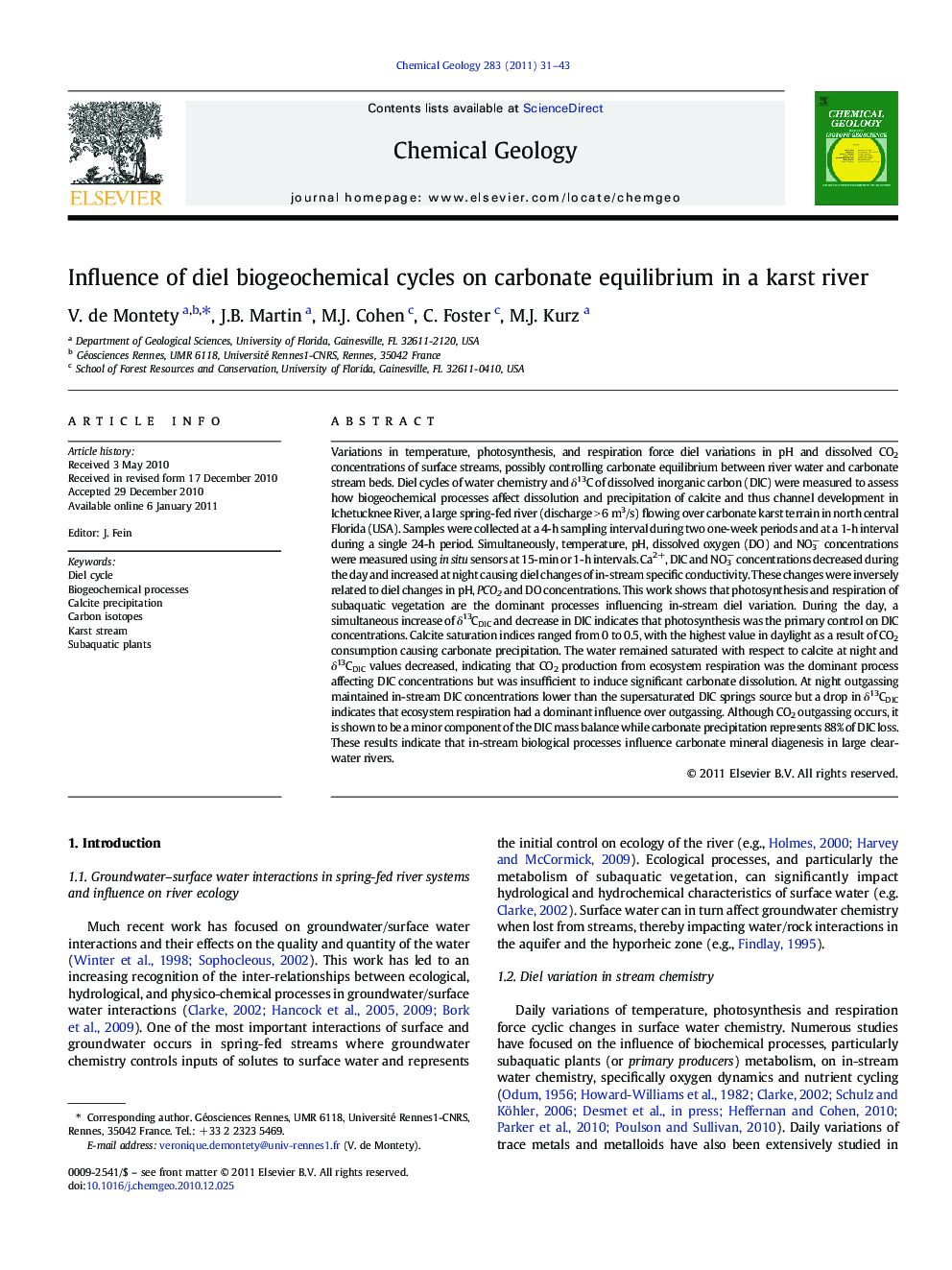| کد مقاله | کد نشریه | سال انتشار | مقاله انگلیسی | نسخه تمام متن |
|---|---|---|---|---|
| 4699817 | 1637670 | 2011 | 13 صفحه PDF | دانلود رایگان |

Variations in temperature, photosynthesis, and respiration force diel variations in pH and dissolved CO2 concentrations of surface streams, possibly controlling carbonate equilibrium between river water and carbonate stream beds. Diel cycles of water chemistry and δ13C of dissolved inorganic carbon (DIC) were measured to assess how biogeochemical processes affect dissolution and precipitation of calcite and thus channel development in Ichetucknee River, a large spring-fed river (discharge > 6 m3/s) flowing over carbonate karst terrain in north central Florida (USA). Samples were collected at a 4-h sampling interval during two one-week periods and at a 1-h interval during a single 24-h period. Simultaneously, temperature, pH, dissolved oxygen (DO) and NO3− concentrations were measured using in situ sensors at 15-min or 1-h intervals. Ca2+, DIC and NO3− concentrations decreased during the day and increased at night causing diel changes of in-stream specific conductivity. These changes were inversely related to diel changes in pH, PCO2 and DO concentrations. This work shows that photosynthesis and respiration of subaquatic vegetation are the dominant processes influencing in-stream diel variation. During the day, a simultaneous increase of δ13CDIC and decrease in DIC indicates that photosynthesis was the primary control on DIC concentrations. Calcite saturation indices ranged from 0 to 0.5, with the highest value in daylight as a result of CO2 consumption causing carbonate precipitation. The water remained saturated with respect to calcite at night and δ13CDIC values decreased, indicating that CO2 production from ecosystem respiration was the dominant process affecting DIC concentrations but was insufficient to induce significant carbonate dissolution. At night outgassing maintained in-stream DIC concentrations lower than the supersaturated DIC springs source but a drop in δ13CDIC indicates that ecosystem respiration had a dominant influence over outgassing. Although CO2 outgassing occurs, it is shown to be a minor component of the DIC mass balance while carbonate precipitation represents 88% of DIC loss. These results indicate that in-stream biological processes influence carbonate mineral diagenesis in large clear-water rivers.
Research Highlights
► Calcite precipitates with diel periodicity in a large spring-fed river.
► Precipitation and photosynthesis cause diel variations in DIC concentration.
► Plant respiration is insufficient to induce carbonate dissolution.
► CO2 outgassing has a minor influence on the DIC mass balance.
Journal: Chemical Geology - Volume 283, Issues 1–2, 7 April 2011, Pages 31–43